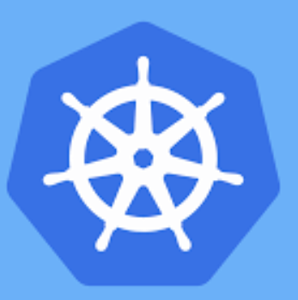
Claude Code with Kubernetes MCP Server
In this post, I’ll demonstrate how to install and use the Kubernetes MCP server GitHub repo with Claude Code , and then show how I migrated the previous AWS serverless OpenWebUI + Bedrock solution to run locally on Minikube. Finally, we’ll explore how to use this Kubernetes MCP server to inspect and troubleshoot the deployment.
Installation & Usage
Before getting started, make sure you have the following prerequisites installed:
kubectlinstalled and available in yourPATH- A valid
kubeconfigfile with contexts configured - Access to a Kubernetes cluster (e.g., Minikube, Rancher Desktop, GKE)
- Helm v3 installed and in your
PATH(optional if you don’t plan to use Helm)
By default, the server loads kubeconfig from ~/.kube/config.
Adding the MCP Server to Claude Code
Add the Kubernetes MCP server with the built-in command:
claude mcp add kubernetes -- npx mcp-server-kubernetes
This will automatically configure the MCP server in the Claude Code settings.
We can now test basic operations such as listing and creating resources using our connected Kubernetes cluster.
Migrating AWS Serverless OpenWebUI + Bedrock to Minikube
Next, I converted my AWS-based deployment to run locally on Minikube. After migration, the Kubernetes MCP server provided an easy way to monitor and troubleshoot the setup.
root@zack:/mnt/f/zack-gitops-project/mlops/terraform-fargate-bedrock-openwebui/k8s-manifests# tree
.
├── README.md
├── aws-credentials-secret.yaml
├── deploy.sh
├── openwebui-deployment.yaml
├── openwebui-service.yaml
├── persistent-volume-claim.yaml
└── validate-deployment.sh
1 directory, 7 files
root@zack:/mnt/f/zack-gitops-project/mlops/terraform-fargate-bedrock-openwebui/k8s-manifests# cat openwebui-deployment.yaml
apiVersion: apps/v1
kind: Deployment
metadata:
name: openwebui-deployment
namespace: default
spec:
replicas: 1
selector:
matchLabels:
app: openwebui
template:
metadata:
labels:
app: openwebui
spec:
containers:
- name: openwebui
image: ghcr.io/open-webui/open-webui:main
ports:
- containerPort: 8080
volumeMounts:
- name: data-volume
mountPath: /app/backend/data
env:
- name: DATA_DIR
value: "/app/backend/data"
- name: WEBUI_SECRET_KEY_FILE
value: "/app/backend/data/.webui_secret_key"
resources:
requests:
memory: "1Gi"
cpu: "500m"
limits:
memory: "2Gi"
cpu: "1000m"
- name: bedrock-gateway
image: zackz001/openwebui-bedrock-gateway:v1 # Update with my DockerHub image
ports:
- containerPort: 80
envFrom:
- secretRef:
name: aws-credentials
resources:
requests:
memory: "512Mi"
cpu: "250m"
limits:
memory: "1Gi"
cpu: "500m"
volumes:
- name: data-volume
persistentVolumeClaim:
claimName: openwebui-data
Now the web console is running locally—migration achieved 🎉. A local deployed openwebui using AWS Bedrock apac.anthropic.claude-sonnet-4-20250514-v1:0 as model, connecting via AWS Bedrock Gateway via AWS credentials from K8S secret, persistent volume to store chat history using k8s pv, expose service to local potal access
Key Migration Mappings
- AWS IAM Role → Kubernetes Secret (for credentials)
- AWS EFS → PersistentVolumeClaim (for data persistence)
- ECS Task → Kubernetes Pod (for container orchestration)
- ALB/ECS Service → Kubernetes Service (for network access)
Architecture Comparison
- Side-by-side Terraform vs Kubernetes diagrams
- Detailed component mapping table
- Preserved networking behavior (localhost communication)
Migration Benefits
- Development advantages: local, faster, offline-friendly
- Architecture preservation: same containers, ports, and communication
- Production readiness: clear cloud migration path with Kubernetes-native tooling
The full manifests are now available at my GitHub repo.
![[Image Placeholder 01: MCP Installation]](/static/blog/images/k8smcp1.png)
![[Image Placeholder 03: Migration Steps]](/static/blog/images/k8smcp2.png)
![[Image Placeholder 04: Local Web Console Running]](/static/blog/images/k8smcp3.png)
![[Image Placeholder 04: Local Web Console Running]](/static/blog/images/k8smcp4.png)